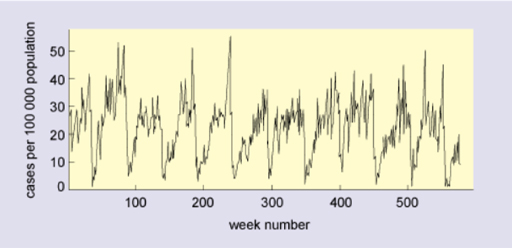1 Epidemiology and modelling
From an epidemiological perspective, each disease is different but there are two main patterns – epidemic diseases and endemic diseases. The SARS-CoV2 pandemic was a classic example of an epidemic disease. It was effectively a new virus in humans and none of the human population had any immunity to it, consequently it produced epidemics in each country affected.
A disease becomes endemic when it transmits continuously in a population, because there are always sufficient susceptible individuals to maintain the infectious agent. Some diseases, such as measles in an unvaccinated large population, are endemic because there are always enough susceptible children to maintain cycles of infection.
In time, an epidemic would develop into a steady-state endemic disease – provided that the virus did not change and immunity lasted for a long-time. However for SARS-CoV2, the virus did mutate and continues to do so. Consequently we have been subjected to repeated waves of infection with new strains of the virus. It is important to distinguish successive waves of an epidemic disease (eg SARS-CoV2), from the regular repeated cycles of infection often seen with an endemic disease such as measles or chicken pox (Figure 1).
ITQ _unit7.2.1
-
Do you think that influenza-A shows an endemic or epidemic pattern of disease?
-
Influenza-A is another virus that mutates regularly and produces successive waves of epidemic infection, usually peaking in transmission during the winter months in the Northern and Southern hemispheres.

